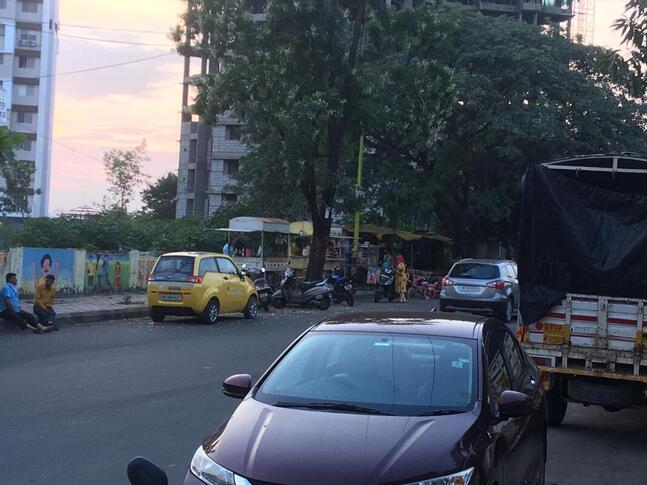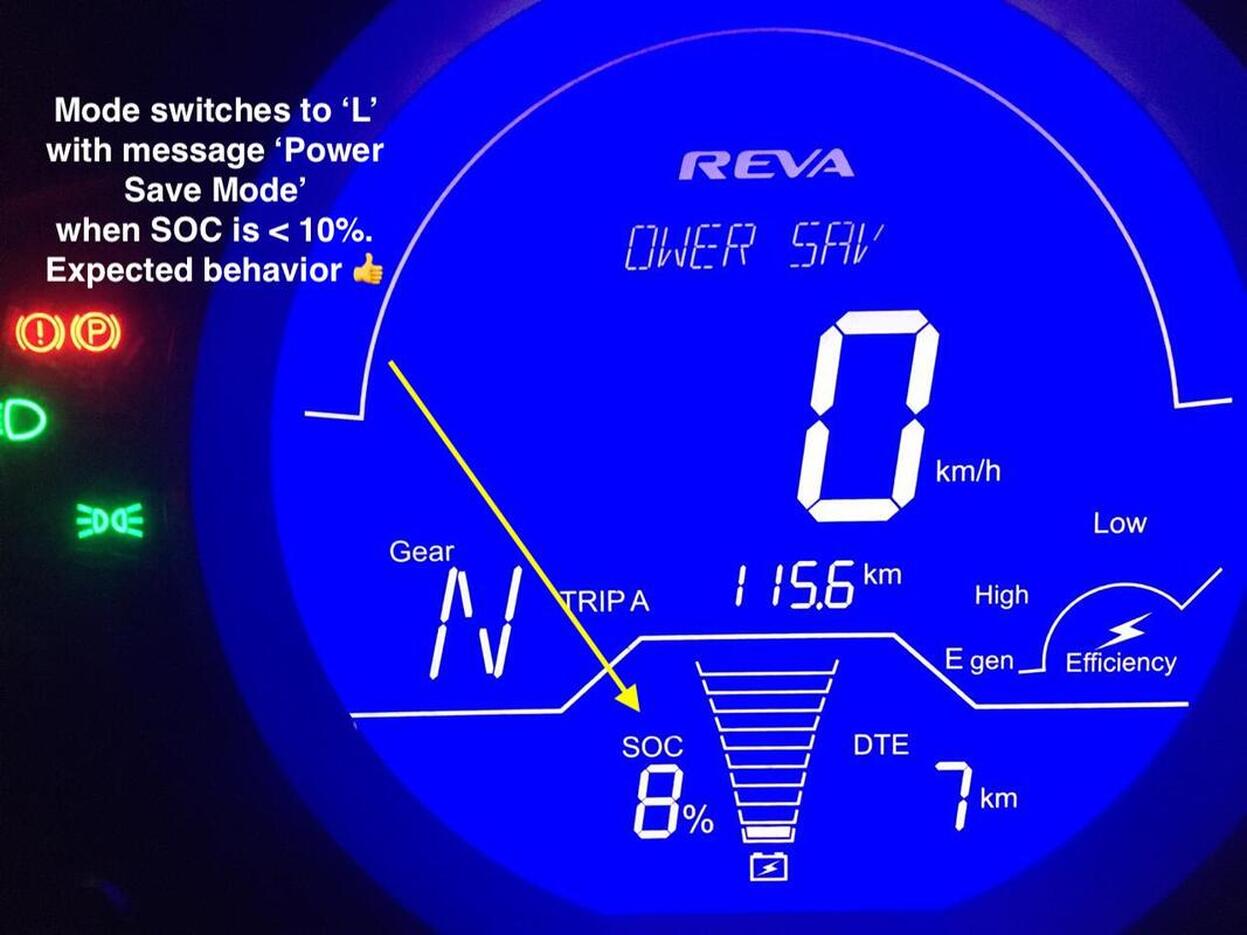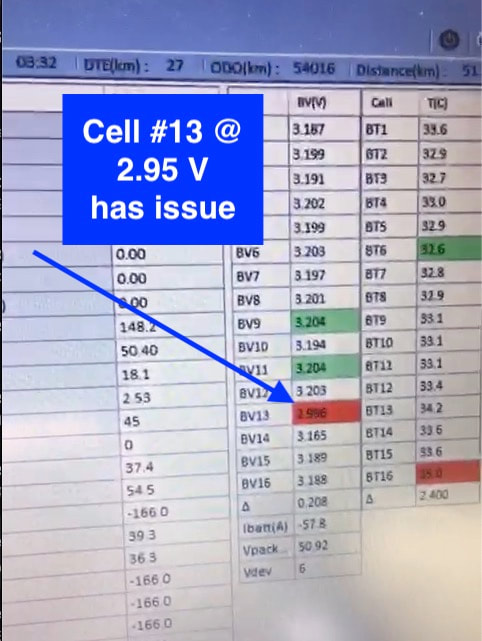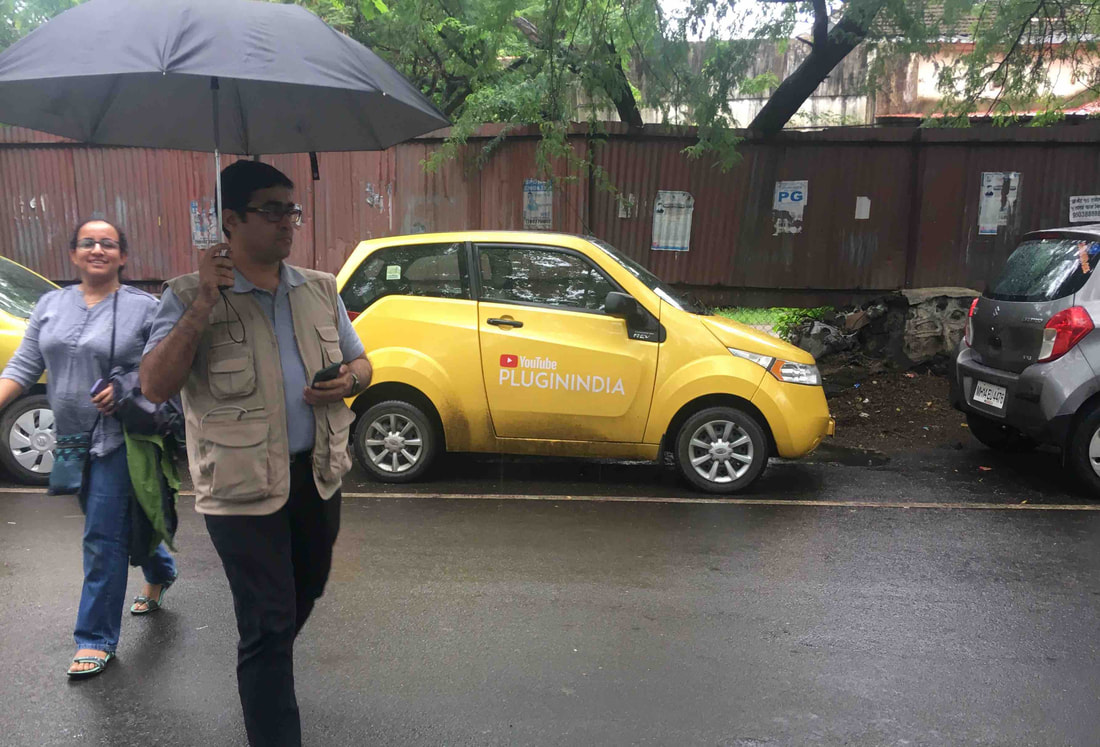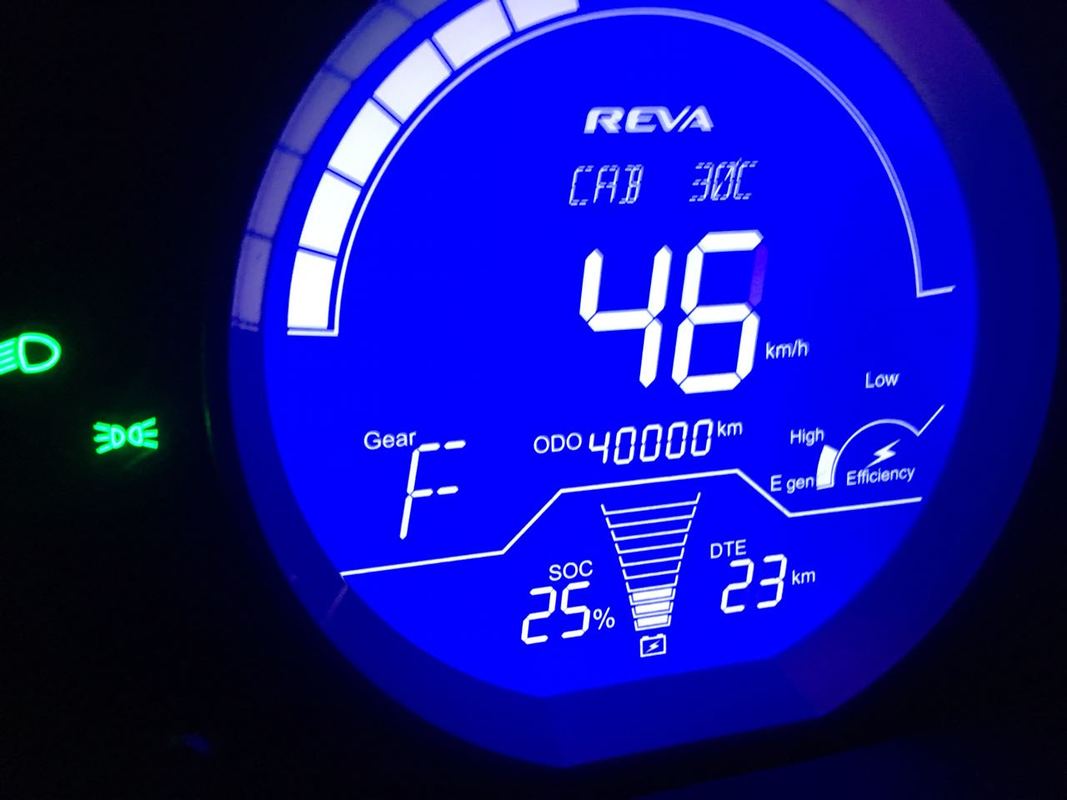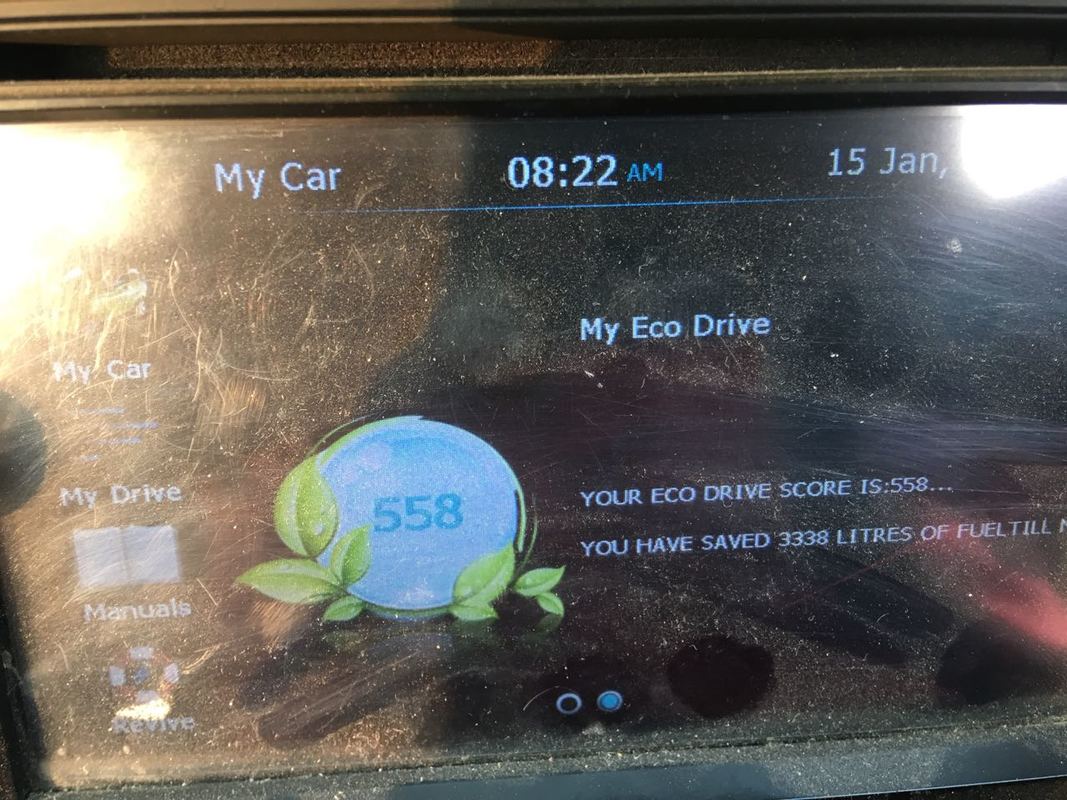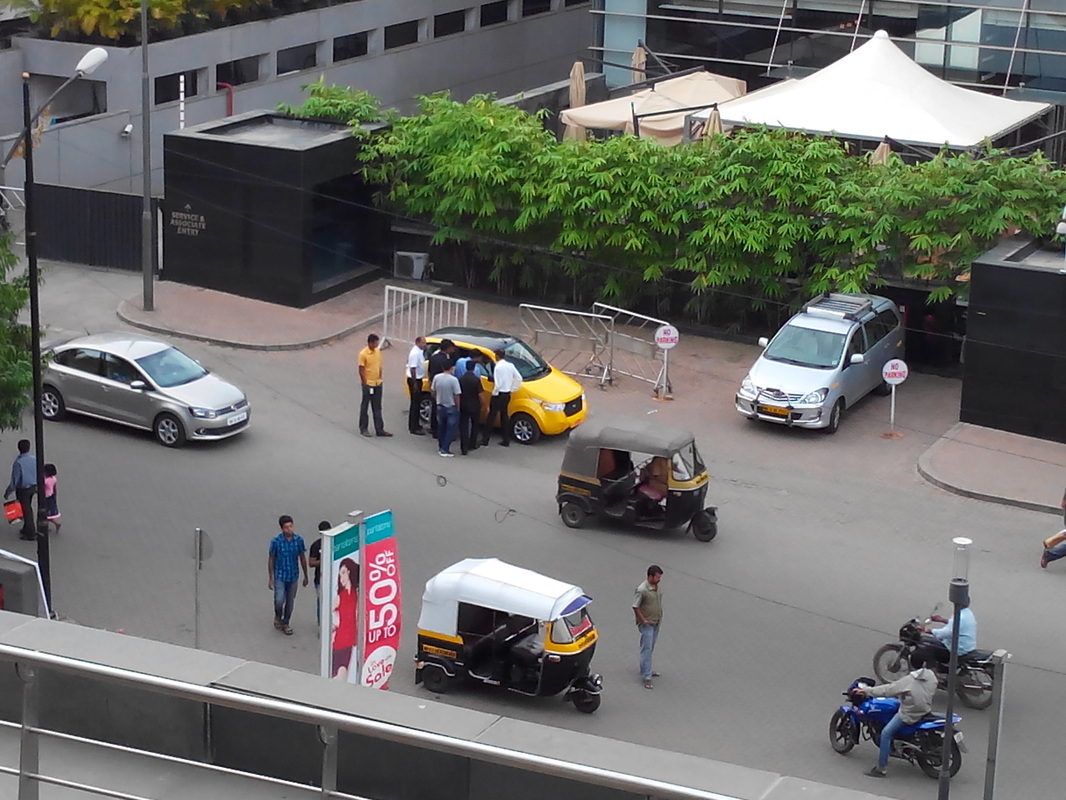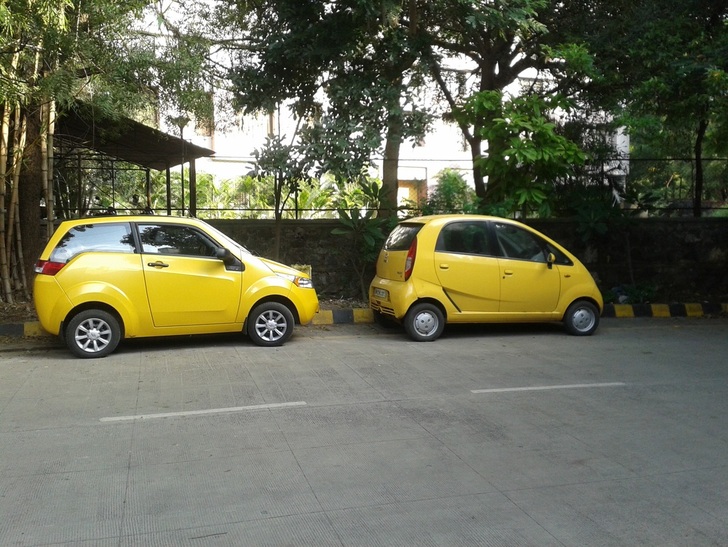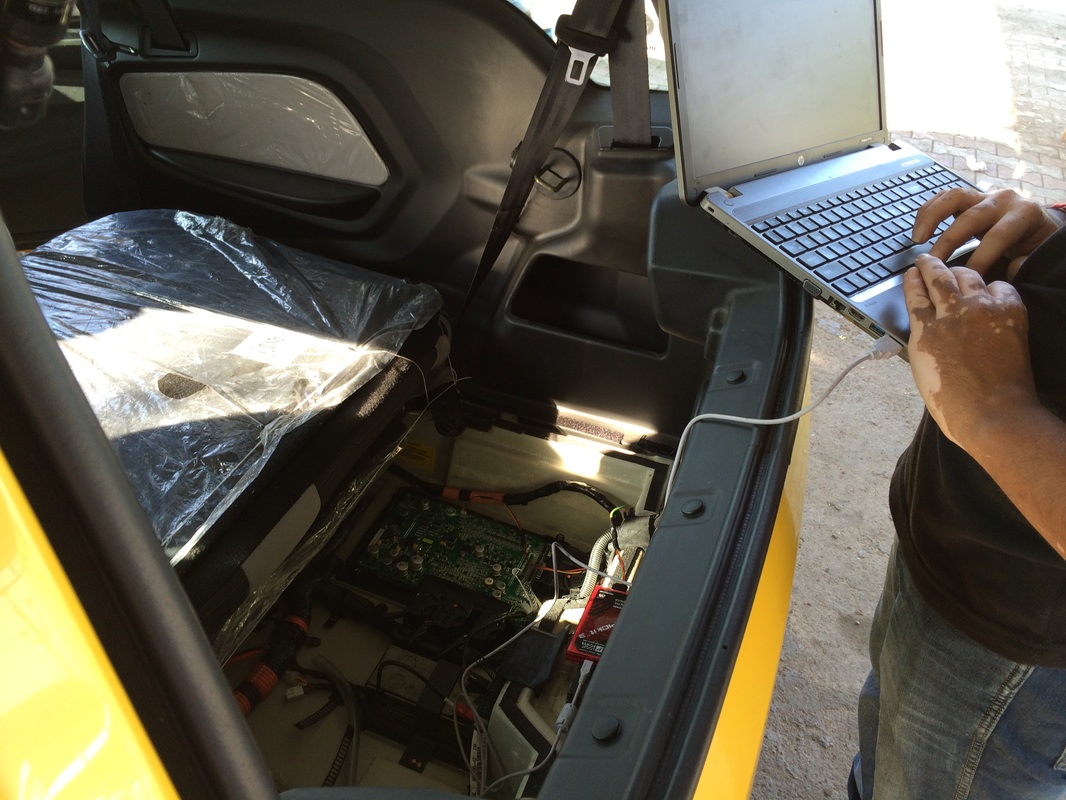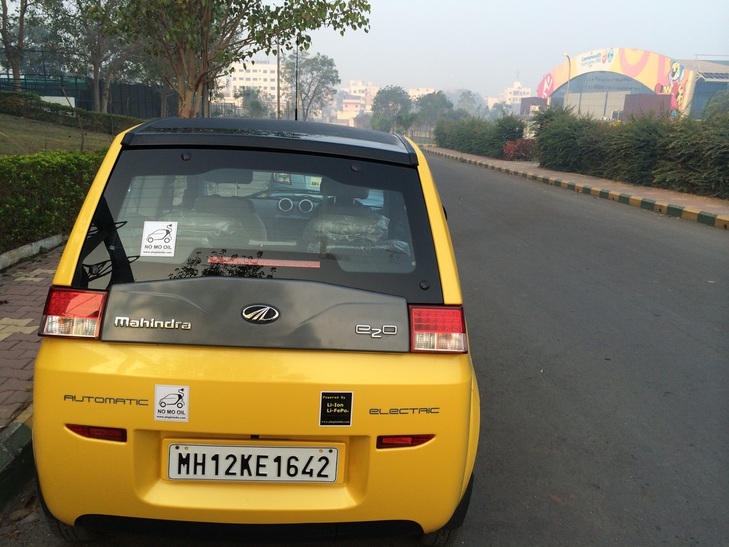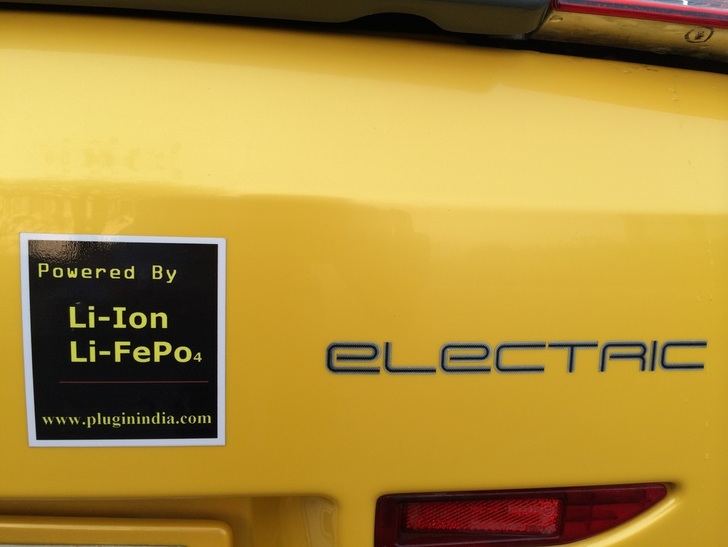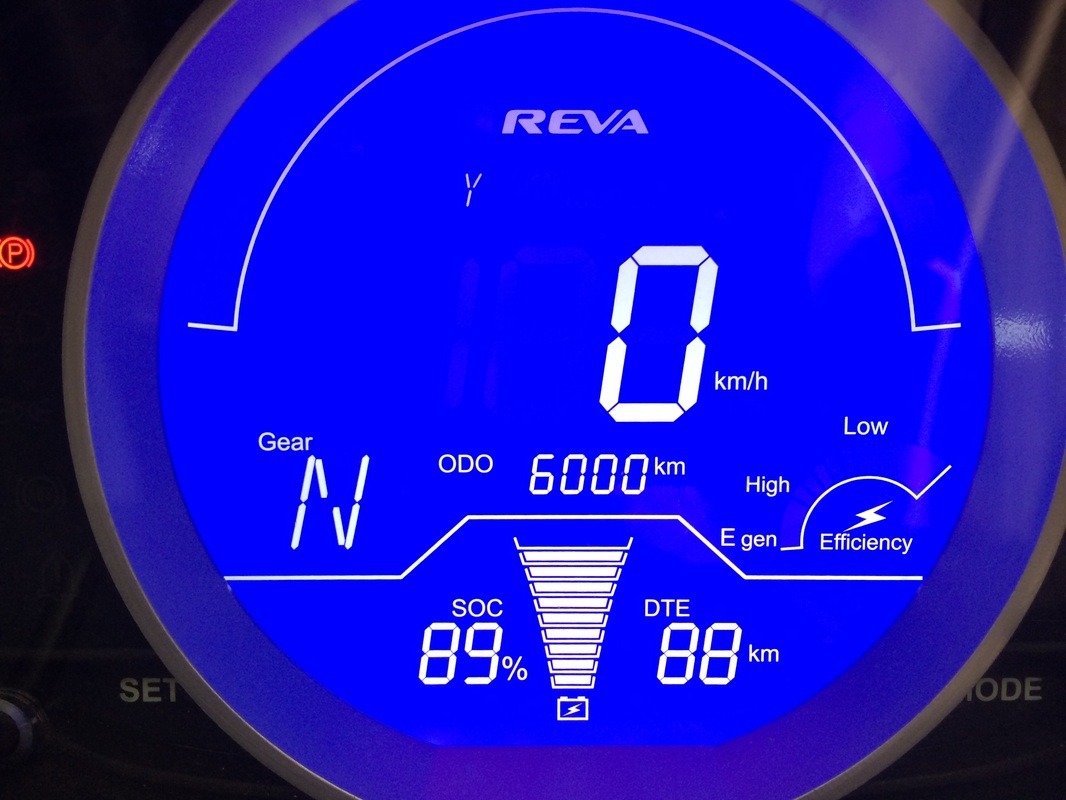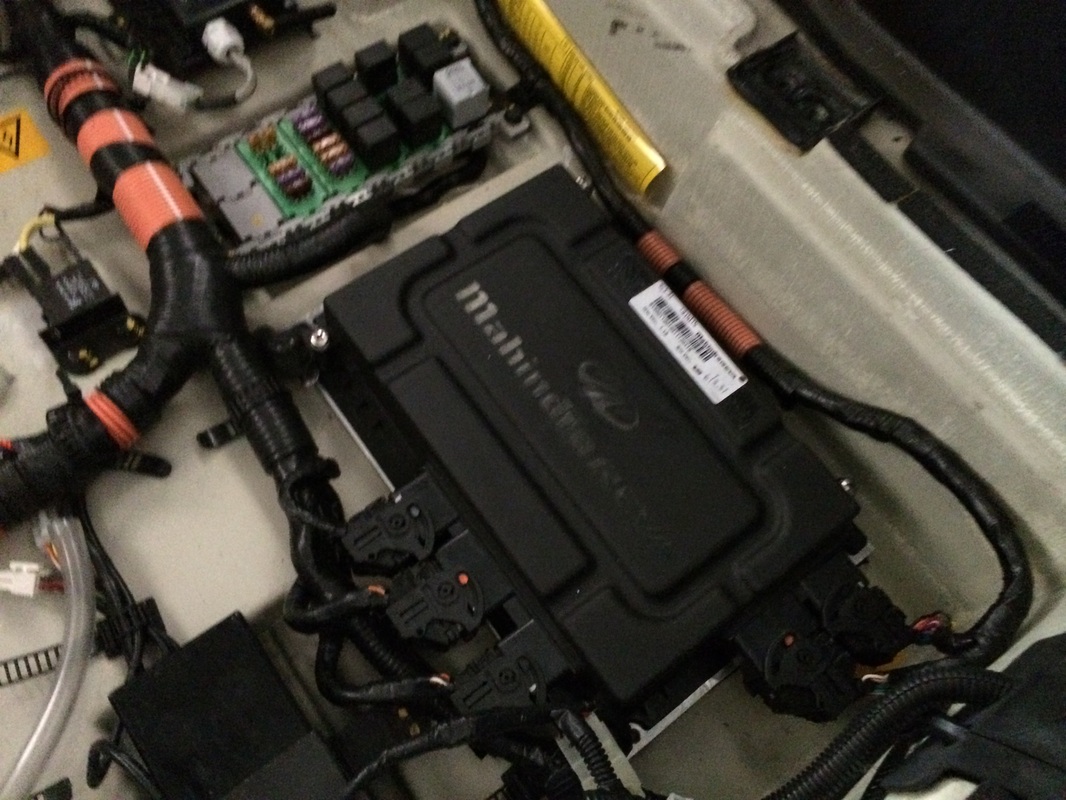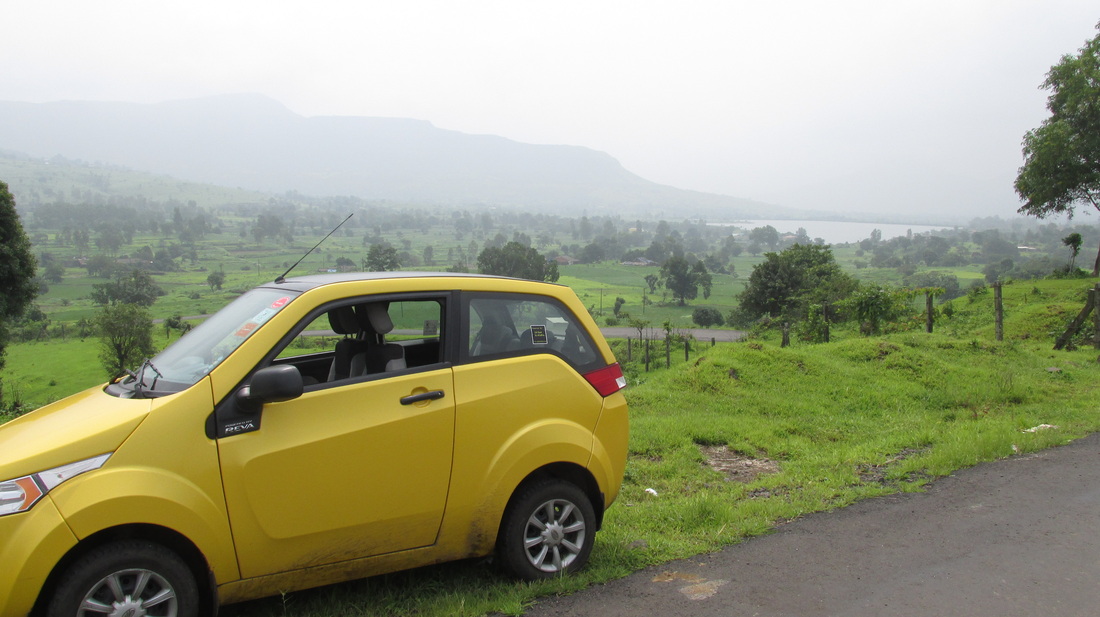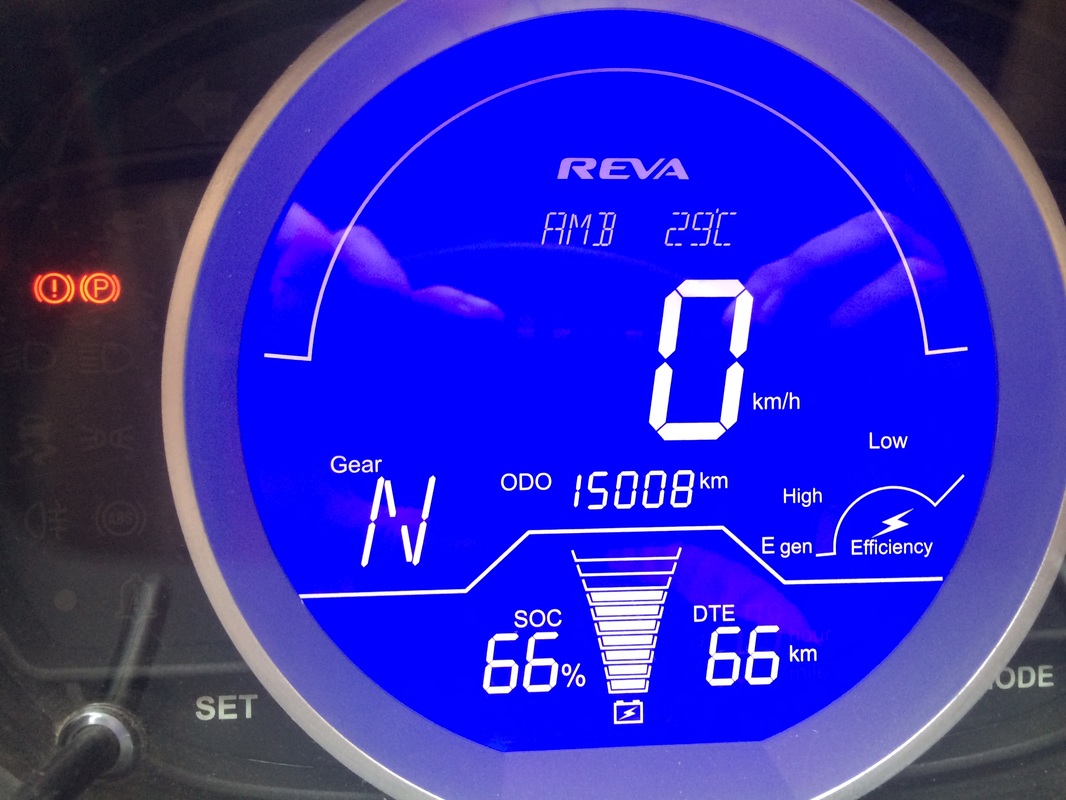If any of you is still reading this, this would be the last entry on this 8 year electric car journey! All good things must come to an end. I sold EVA to a very nice family in Pune. Thanks for all the comments and support. This car enabled me to meet wonderful people all over the country and we did some incredible things together like working on the PluginIndia platform, EV Events and more. The EV Community is growing rapidly nowdays compared to 2012. I have linked an interview with the new owner on what changes he made to EVA and how happy he is!
This was our interview with Abhishek - the new owner of EVA!
Hello reader!
Again it's been a while since my last update. I'm hardly driving much these days as i work from home and with the pandemic, social occasions and physical meetings too have disappeared. As of September 2020, EVA has clocked 54,500 km. I thought i will give another update on how we could solve some battery cell issues that were encountered.
I also share some photos from a recent day trip i did. I also did some low SOC testing to check battery cell health.
EVA still performs brilliantly and its just an amazing car considering i have completed 7 years :)
It is recommended to perform low State of Charge testing once or twice every month, especially if you are driving less than 800 km per month and if your e2o is more than 5 years old.
So i did 2 days of low SOC testing and checked the cell data. They were doing good. I got 105.5 km with 8% SOC remaining.
Eva had cell issues - How did i solve it?
EVA had a tough 2019 and tough early 2020. As i had not used the car much in 2018, the started experiencing battery cell issues. This resulted in me working with the Mahindra service team for close to 4 months trying to test and analyze the data.
This was was the main issue. And it's a big one and kind of unpredictable.
- The car suddenly used to stall randomly even if the State of Charge(SOC) was anywhere between 25% to 60%. The car slows down and the accelerator stops working and you get a message saying 'Charge Car' on the instrument cluster (See video below). You have no option but to pull over and tow it to the service station.
- In some cases, i have observed that the car may stall if you go below a certain low state of charge with either the message 'Charge Car' or 'Safe Mode' in the instrument cluster.
So the ironic thing is even though you are stuck in middle of the road and its not a good feeling, it is beneficial for the overall life of the battery pack.
The Mahindra e2o has 16 LiFePO4 Rechargeable Battery Prismatic Cells. These are branded as Winston Thundersky. These are excellent quality cells and are performing very well in the field. Its been close to 7 years and not even a single e2o customer has changed their entire battery pack as yet.
Each cell's voltage range is between 3.71V to 2.2V. When cells are at low state of charge < 10% SOC, the cell voltages in a healthy battery pack are between 3.00V to 3.1V.
If some cells have issues and even if one cell goes below 2.9V, then the car will stall showing the above error.
You see the e2o's battery pack has a Battery Management System(BMS) that wants you to charge your car overnight for 10 hours atleast twice a week. This gives the time to ensure all the cells voltages are balanced. Its advisable to drive everyday and charge every night once the e2o is more than 5 years old.
Individual cells in the e2o's battery pack, can get weak if
- You don't charge regularly
- You don't keep cells balanced (charge 3 times a week for 10 hours)
- Your driving is way less and you occasionally use the car.
- Or you have crossed more than 2000 cycles in the battery pack. This LiFePO4 cells can go beyond 2000 cycles. I have completed around 1000 cycles.
So if your e2o experiences consistent and unpredictable stalls at 50-60% or maybe lower than its time to see which one or more cells are weak.
So this is what i did. I drove everyday for 3-4 days from 100% SOC to 25% SOC or till when the e2o stalls. I did the testing near the service center, so its easier to reach out in case i stall! Once i reached a low SOC or when the car stalls, I asked the service technician to connect the car to the laptop which has the 'Vehicle Analyzer' software developed by the old Reva folks. This software will show you the voltages of each cell and you can easily see the cell which has the lowest voltage. See the photos below.
The photo on the left shows how one cell was consistently showing low voltage < 3V even though the car was at 28% SOC. Remember once the cell has a voltage of 2.9V, the car will stall. So i tested this on multiple days after overnight charging and everyday i observed cell #13 was always having the least voltage.
The Mahindra service team floor tested and boosted the cell one day and kept it for overnight charging. And even then i experienced the same data. Cell #13 was always having the least voltage at low SOC.
I did this testing for 4 days and ultimately the service team members at Mahindra gave me the option to change the cell.
Now at this point, i could have opted to not change the cell and drive the car for max 40 km and not more, before recharging! Which was a ridiculous thing to do!
Or i could take the advise of the Mahindra service team and get a new cell which will make the pack better and i could drive like normal for 90+ km.
I changed the single cell and the photo on the right shows the cell voltages at 7% SOC and the new cell #13 is performing brilliantly :)
So if you get this error, you know what to do. You have to get the cells boosted at the service center and do low SOC testing and check cell data.
And then drive your car everyday charge your car everyday. Atleast once or twice a month drain battery to 15% and test the cell health at low SOC. You will be golden.
So Mahindra electric as usual inflates price of spare parts and charged me Rs 35k for the new cell. I was having none of it and demanded a discount :)
I was finally charged Rs 24k for the new cell. If you read my 2019 update (see below). I had spent around Rs 40,000 in maintenance over 6 years.
With this cell replacement, the total maintenance comes to around 65,000 for 7 years of usage.
This kind of amount is just unheard of in the pollution car world! I have seen people spend more than Rs 40,000-60,000 on maintenance of pollution cars in just one year!
Electric cars are amazing and they will only get better as we are seeing with such capable cars like the Nexon EV being launched in 2020.
The problem is the BMS in the e2o does not have active balancing systems and most modern electric cars have top class BMS which keeps evolving in time as the RnD keeps adding features to them. Sadly once Mr Chetan Maini left, the Mahindra team did not invest in RnD which would have benefitted the e2o community greatly.
Also back in 2013 every battery packs were remotely monitored and if there are any issues the servers used to send us preemptive SMS messages, so we can take it to service center. I wonder what has happened to all those automated systems built by the Reva team. Mahindra seemed to have got rid of key processes, personnel and technology that was needed to ensure all e2os on the road were monitored, connected and taken care off.
Unfortunately Mahindra never had any vision to improve on the e2os and this has resulted in difficult experiences for customers.
Letting so many cars belonging to customers stall without any warning is unacceptable. This clearly shows the senior management of ME does not care about its customers
But atleast we are grateful that Mahindra still has equipment and people to service our e2os. So, there is that.
I also would like to thank service team of Mahindra who are super helpful - Mr Anurag at Shiv Mahindra dealer in Pune and Mr Rajib, e2o Service head from Mahindra electric.
Overall i was happy to analyze and solve the issue. But not all customers will go indepth and analyze issues like this. Most owners will leave it to Mahindra service team to fix cell issues. In that case, there is no way of validating if the issue was really solved or did the service personnel just do the bare minimum that was needed which will ensure issue will flare up again. We have had many cases of owners having stall issues multiple times without any understanding. Also we had seen cars in the service station for weeks although that has improved significantly in recent years.
I love the e2o and the Reva team which built it, but i cannot say the same for Mahindra Electric. I would not recommend them until they change and show me a strong technology vision when it comes to Electric Vehicles. My next electric car definitely wont be from Mahindra Electric. That is for sure.
Hello reader!
It's been a while since my last update. I decided to check in and add some comments.
EVA has completed 6 years and 50,000 km which is around 8500 km per year.
I have saved more than Rs 3 Lakhs on fuel alone, if i would have gone for a petrol car back in 2013!
EVA has performed brilliantly and reliably over the 6 years. In the 6th year service i had to get the following parts changed.
- Wiper blades
- Steering components
- Gear shifter
- Door latch
- Suspension upgrades
- Battery capacity check - which is a service.
They also told me i have consumed 912 cycles and i can go upto 2000 cycles.
So as per the report, i should be able to use the e2o Batteries for another 5 years for my use, which is fantastic news.
The service, part replacements including the battery capacity check costed me around Rs 14k this year.
My total maintainance cost on the e2o for 6 years has been
- Rs 0 for 5 years annual service
- Rs 18,000 for 4th and 5th year extended warranty
- Rs 940 for a part change in 3rd year, 2016
- Rs 2466 for a part change in 4rd year, 2017
- Rs 3700 for AC component change in 5th year, 2018
- Rs 14,000 for above mentioned 6th year service, 2019
The extended warranty protected me from electronic part failures like onboard charger, IEMS, AC compressor which are expensive.
I theoretically need not have purchased it. But spending around Rs 40,000 over 6 years is almost unheard of, in the ICE car world.
This really shows how frugal and value for money electric vehicles are!
Hello reader!
It's been a while since my last update. I decided to check in and add some comments.
EVA has completed 6 years and 50,000 km which is around 8500 km per year.
I have saved more than Rs 3 Lakhs on fuel alone, if i would have gone for a petrol car back in 2013!
So EVA is getting old. In August, she will complete 5 years and nearly do 50,000 km.
The car warranty on electronic parts, the extended battery warranty all will expire in a few months!!!
The battery is going strong. I'm still getting around 120 km per charge. I feel i can use this battery pack for 3 more years and then re-evaluate. Maybe i can buy a new pack, after the 8th year and also bump up the range to 200 km per charge or more!
Let's see!
I will keep this blog going and report issues and successes of this amazing car! Thanks all for reading and commenting!
EVA has completed 4 years 5 months and has crossed 40,000 km!
Excellent performance by the e2o over the last 40k km. No major issues faced so far - apart from replacing the IEMS, some sensor replacements and drive fault issues. And all of this was covered under warranty.Multiple trips done outside Pune to Mumbai and other places in heat, pouring rain. All handled very well.
Excellent service by Sahyadri Motors, Pune team too.
Let's see how the next 4 years hold up!!
Please note this blog was written almost 3 years back and there have been changes. I will continue to pen my thoughts, as i continue to use EVA and will discuss changes i observe.
Sections
After not owning any sort of vehicle in my life (have lived 30+ years of it), i decided that its time to have some sort of option for personal mobility. So i decided to buy a car.
Most people buy a car just to satisfy a desire, once the desire is satisfied, they get pissed off with the rising costs of maintaining the damn thing and then crib about the sky rocketing fuel prices. Some people even take huge loans and once the desire finishes giving them their 'false happiness', they are stuck with their vehicle and see it as a big burden.
I also know lot of people, who buy a car but use a two wheeler most of the time - pissed off with the sky rocketing fuel prices and high maintenance aspect of their oil based cars.
Of-course the above is not true for people who are well off and don't care bout the price of oil. The above applies to our middle class.
And of-course there are people who have resigned to the fate, bout high fuel prices and just pay it.
I did not want to make the same mistake. I knew there had to be a better option.
- An option, where i would feel like using my car for a long time, rather than see it as a burden.
- An option, where i knew that using my car would not burn a hole in my pocket due to fuel prices and maintenance.
- An option, which would ensure that i don't give my money to large corporations (read OIL).
- An option, where i knew that using a car would keep the air in our cities clean.
- An option, which would ensure i always have fun driving my car.
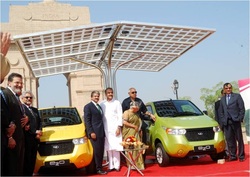 Launch of the Solar Powered e2o in Delhi
Launch of the Solar Powered e2o in Delhi And i instantly knew that this was the missing option that our Indian public never had!!
- It does not use oil! Ha! Take that, u oil companies!
- It does not pollute!
- It uses advanced Lithium-Ion battery packs used even by top American and Japanese electric cars like the Tesla Model S and the Nissan Leaf.
- It can run on the power of the Sun
- You can always stay connected to your car using your mobile phone.
- Its an electric car and has less moving parts than oil based cars and thus is virtually maintenance free
- It uses Indian made electricity rather than foreign oil, which keeps my running costs down and helps my country.
- It does not have an oil based engine, coolant system, oil filters, fan belts, exhaust pipes, transmission changes, oil changes, and nothing to do with oil, oil and oil!! :)
However, there were some barriers for lots of people.
 Costs!
Costs! The car costs Rs 6 to 7 Lakhs and judging by the comments on the Mahindra Facebook page, people were disappointed that this car cost so much. Most countries in the world offer generous subsidies to ensure people go electric and thus help them reduce their OIL import bill. But our Indian government has no such scheme, although the 'National mission for electric mobility' was launched in January.
Now the cost. There are furious arguments bout the prohibitive cost of this car. I agree and wished, Mahindra could have kickstarted this with more aggressive pricing. A cost of 5.5 to 6 lakhs would have had more takers.
When i thought bout this, i realized that the e2o is one of the cheapest Lithium-Ion based electric cars in the world at the rate of $12000 to $15000.
The Tesla Model S costs an approximate $60000. The Nissan Leaf costs around $30000. The newly launched BMW i3 electric costs around $40000.
So here we had Indian engineering being delivered at the fraction of the cost.
The battery pack of an electric car is the most expensive component. The Mahindra e2o has a battery pack that can store 10kWh worth of energy. Apparently, Mahindra pays $550 per kWh for the Lithium packs. So the battery pack itself costs around $5500. This amounts to Rs 330000 and thus the high cost.
Also i would avoid comparing the e2o with the cheapest petrol based car - Nano.
People do this all the time and its wrong, as the e2o has way too many cool features to be compared to the Nano. People make a table, compare the e2o with the cheap cars available in the market and make their point that his car does not give them value.
My argument against such people is that, if there is a comparison to be made - then compare the e2o with cars of similar class and then look at the savings.
So after analyzing this important fact, i realized its okay to pay a premium for technology that was new and for a car that would help me save money every time i drove, due to the low running costs and virtually no maintenance.
It would have been cool to have some sort of help from the government, but sadly it was not to be.
 Range in an EV
Range in an EV People would not like to pay Rs 6 to 7 Lakhs for a car which just goes just 100 kilometers and which needs to be charged. These are the same people who would willingly spend the same money on a premium hatchback like the oil powered Nissan Micra, Honda Brio etc.
Why? The only reason is that they could do 'long distance travel'.
Now all of a sudden when people analyze the range of an electric car - everybody wants to go on road trips every weekend, everyone become road warriors - atleast in their heads :)
What everybody ignores is the fact that, most people use their car, 95% of the times in the cities. Going to work, running errands, picking up people etc.
I realized that by buying the e2o i will have to sacrifice long distance driving. Which i would gladly do and whenever i need to go long distance, i would take the train or use the bus or rent a gas car using the savings and the cash that the e2o is printing for me :)
An interesting point to note is that, the e2o is charged using a 15A socket. This means that i could still go on day trips to the mountains near Pune and if needed, charge the car in some hotel or dhabha as the 15A socket is very common.
Yep. I could still make a nice day trip using the e2o.
Heck! I can even do Pune-Mumbai if Mahindra installs their quick charging system. That would be cool :)
 Man's greatest invention - Electricity
Man's greatest invention - Electricity Some people are even skeptical bout depending on electricity!!! They fear that the grid will collapse and electric cars will get stranded! That applies to OIL too, which by the way is a much more volatile commodity.
Also electricity is generated in India. Whereas OIL is imported from countries that hate us!
Anyway people just want to make an argument for the sake of it and they make it :)
Now the e2o takes 10 units of electricity per charge. Suppose i charge say 3 times a week. That would mean 12 times a month = 120 units a month = Rs 480 (at Rs 4 per unit) just to operate the car. Compare that to Rs 5000 or 6000 people spend of petrol each month.
The cost savings are huge.
Granted that prices of power too could rise, but we could always offset that by installing Solar Panels and run the e2o from the power of the sun for free.
See!! An electric car provides you options that don't exist with an oil based car. With an oil based car, people are stuck/dependent on the Middle East, the Government and the oil companies.
Speed junkies crib bout the top speed of 80kmph. But that is more that what i need and if i need to speed up and accelerate, i still can go fast. And by the way an electric car has max torque right at 0 RPM (revolutions per minute) and thus the acceleration of the e2o is quiet peppy when u step on the pedal. An internal combustion engine cannot give you max torque at 0 RPM.
Battery Replacement
Yes, i will have to spend around Rs 1 Lakh (current rate) on a new Lithium-Ion Battery pack after 4-5 years.
This is a big amount and is something to be thought bout. However battery technology is evolving pretty fast.And the cost of the batteries have dropped dramatically. They have dropped in half in the last 4 years. Experts in the field say that they will drop further in the next 4 years.Here's a nifty little idea which would put to bed, this worry.
Anyone buying an e2o, can create a recurring deposit of Rs 2000 every month and thus use the interest got from a bank to pay for the battery pack :)
Reliability of the e2o
There is a valid question asked by people. How reliable would this car be? As its the first car released by Mahindra Reva. Its basically a version 1.0 product.
I did some research and found that not be to true.
The concept for this car was developed way back in 2009 and was displayed in the 2009 Frankfurt auto show.
The e2o's predecessor was the Reva which was sold worldwide. So its not as if the e2o is a V1.0 version of the car. There have been lots of customer insights from Reva users and feedback has been received and implemented here in the e2o.
So there should be no worries bout the reliability of e2o as its built on the Reva Platform.
But once i saw no action from our lethargic government, i just went to the dealership - took lots of test drives, loved it and booked it. :)
I got the yellow e2o after a month of waiting. I went to the dealer with a friend and saw the shiny new e2o getting ready for puja and prayers. Its a nice touch by Mahindra to ensure that all their dealers perform a ritual/prayer for Lord Ganesh - the remover of obstacles.
Here are some photos of EVA along with captions explaining them.
As that's what i named her :)
- First thing u notice, how quiet EVA is. She really is quiet, especially when the AC is turned off.
That is because there is no engine noise. You hear a faint whine of the electric motor. - You step on it then you observe that there is good acceleration due to the instant torque but you don't feel the vibration and they don't hear the noise. Its just a smooth acceleration. All EVs are like this and i was pleasantly surprised that the e2o was this silent.
- The Range estimation is very accurate provided we stick to using the 'F' (Forward) mode and not accelerating in an inefficient way.
For example we traveled from Baner to Amanora Town Center in Pune - a distance of 22 km. The charge on EVA while starting was 98km. We drove with the AC on all the time and FM radio playing.
When i got back the range left was 50km. So it used up 48km worth of energy for a distance of 44km. It consumed 4km worth of range for the AC and the electronics. - EVA is such a pleasure to drive with the automatic transmission especially in stop and go traffic.
- Very good braking system. We got down from 60 to a virtual standstill in bout 4 seconds.
- We reached a top speed of 84 kms in the Mumbai-Pune Old Highway. Unlike the Internal Combustion Engine cars, EVA does not make any fuss/noises when stretched to its limits. That's bcos there are no moving parts apart from the motor.
- I hardly use the Boost mode. I stick to Forward most all the time, I only use the Boost mode if i need to go beyond 65kmph. The Forward mode is more economical.
- All u need is a 15A socket to charge her.
- A techie's dream - 7 inch touch screen - GPS Navigation, iPod, USB, SD Card, Bluetooth, DVD, Reverse Camera, Mobile phone integration - even luxury sedans don't have these features.
- Almost 0 maintenance vehicle. All we need to change is brake oil and tire checkups once a year. Also the Mahindra Authorized Service guy told me to better to check for air pressure of 35 ps. Its better add some air once a month in the tires.
- No Power Steering. The lack of power steering is not noticed when changing lanes or slowing down during a turn etc. But its noticed when at lower rev's.
- Scratch & Dent proof body - a plus in Indian chaos.
- An all digital car - where EVA gets various software upgrades that can give added functionality in the future. This again is a first. Your car grows with age :)
Here are some frequently asked questions and hopefully i can answer them.
- Will we get the entire 100km as range in the e2o?
Yes. If you don't use the climate control and drive using the 'F' (Forward) mode and not using 'Boost' mode often. Also step on the accelerator gently instead of pushing it hard. This will ensure gradual release of electrons that move between the Cathode and Anode, rather than forcing them to move fast through the electrolyte, which results in loss :) - Is 100km range enough?
It depends. In a city like Pune its perfect, as i can traverse the length & breadth of the city and still have some juice left on me. In bigger cities - you might have to charge the car to get back.
But trust me - 100km is a fairly large distance. And this will work for lots of users. - Have u really gotten in a situation where u run out of range and u r stuck?
This would never happen, as i know the exact distance of my journey and i plan ahead for it. If am doing a 60km ride, i ensure that i fully charge the batteries. Well, even if you are stuck, there is this cool REVIVE feature where Mahindra will remotely activate some power for you to go on. Its clever move by Mahindra to preserve the life of a battery pack as Lihium-Ion batteries don't like to be deep discharged.
That's all i could think off. Feel free to ask more questions and i shall answer them, if i can.
So there you have it folks, EVA is quirky, quiet, does not pollute and is electrifying :)
 Dude - An ex EV cynic totally floored by EVA :)
Dude - An ex EV cynic totally floored by EVA :) You hear stories like this all the time in the EV world.
Then they realize that -
"Oh My God! This is a good car!"
Then u can start telling them bout the social implications like - there is no war for electricity, there is no pollution, u r not sending money out of your country then they realize that this is a life changing vehicle.
With all the troubles we have in the world - How the banks and large corporations (OIL) are hoarding money.
All of us give them the money.
Electric car owners stop giving them the money. The electric car owners pays a little bit to the utilities and they spend the money on things they want to buy and thus vitalizing our local economy.
Instead of sending 150 Billion $ on imported oil each year we keep the money here and keep our wealth in India.
When production ramps up in the future, when we have multiple companies launching electric cars - am sure the electric car will be on everyone's thoughts!
For now, am happy to be part of this revolution.
Scenario 1
I went to get some groceries and got back home. I parked EVA in my parking lot, i lock her and head to the elevator. As i was waiting for the elevator to come down. I get an SMS from Mahindra... It was EVA!
The message read as follows
23rd August 2013 - 20:05 hrs. Did you forget to pull the hand brake? Always pull up the hand brake before you exit the car.
Scenario 2
The other day i went down at 11:45 PM to charge EVA as she was low on juice. I instructed the watch man who stays awake all night, to switch the plug off after 3 AM. As i knew EVA would have got fully charged by then and its no good keepin the current flowing. The watchman did as instructed and switches off the power.
I wake up at 7AM and see this Text message in my inbox... It was from EVA!
The message read as follows
21rd August 2013 - 03:05 hrs. The car is fully charged and the power was turned off. But the charge plug is still plugged into the socket. Do unplug the charging cable from the car's socket.
Scenario 3
I got back from work and I parked EVA in my parking lot and head to the elevator. As i was waiting for the elevator to come down. I get an SMS from Mahindra... It was EVA again!
The message read as follows
22rd August 2013 - 19:35 hrs. Did you forget to lock your car? No worries - Use your mobile phone to lock the car.
This kind of self awareness and prompt communication is unheard off in any Indian car.
EVA is truly self aware and is clever. Every user mistake or an anomaly detected in the car is recorded and sent to the Mahindra servers and the back-end system automatically updates the user on issues.
Now this is COOL :)
This was while driving from home to work (distance of around 10km) and my starting range left was 45km and when i reached office - it was 32km. There was no AC on. So due to my inefficient driving it used up 13 km worth of range.
Today, i went gentle on the pedal and ensure there was gradual acceleration. When i started the range left was 85 km and by the time i got to my workplace back it was 77km (it used up 8 km worth of range)
So efficient driving and being calm bout situations will help you get better range. It does not mean i went at a slow speed of 30kmph.
Its far from the truth. There were sections where i was on a constant 60kmph. Its all bout the force u exert on the pedal.
The more force exerted on the pedal, the more electrons are forced to swim through the elctrolyte from the Anode to the Cathode giving u more power but less range.
The driver is often the number one cause of reduced electric car range.
It comes down to stress, poor driving habits, or lack of concentration. Given yourself 10 extra minutes to make the trip, you’ll find you’re calmer and much less stressed behind the wheel. A calmer driver is a more attentive driver, making it easier to maximize your car’s energy saving regenerative braking and make smart choices when it comes to reading traffic flow.
Why speed up to every red light, slam on the brakes, and speed away again to the next light?
Which OIL based car can cover a distance of 110km and get it done by using 92km worth of energy?
Watch to find out how!
We kid you not! At the top of the Lavasa hill we had around 40kms range left and when we reached the bottom, we gained 10kms worth of energy which ensured that we had 50km worth of energy left. It gave us a lot of peace of mind as we did not find a 15Amp socket to charge EVA.
While going back, we had around 25kms left, at the Lavasa gate but we still had to cover 45km and the magic of regenerative braking ensured we got back home with 8km worth of energy left
- Lots of experienced ICE based car drivers were surprised by the instant torque and power available from the 0 kmph. They did not expect an electric car to have that kind of acceleration. That's the first thing ICE based drivers observe when they step on the pedal - the instant acceleration. So you will never be left behind on traffic lights.
- The brakes takes time getting used to. One friend who drives an ICE based car, applied pressure on the brakes just like he would normally do on his car and the car almost stopped! Luckily we did not get rear ended.
The brakes have an unpredictable and sudden bite to them. But i got used to it in one day. It did not cause a problem for me. - Lots of friends admired the ride quality. Its absolutely satisfactory. You don't feel small potholes etc. The Macpherson strut suspension system is used in most sedans and is used here, so the ride quality is good.
- Power steering - Now i was apprehensive bout the lack of it. And i dont feel the need to have it on the e2o while driving or while even making turns. I only feel it when i park the car in my garage. Thatz when, i need too do lots of revolutions and it can be frustrating. But its no big deal, although it would have been a plus.
- Dent Proof & Scratch proof panels - I had a bike guy scraping his bike on the side and i noticed no scratch. This is a plus in crowded Indian cities, where u encounter absolute chaos and bumper to bumper situations.
- Silence - Is just wow! When u turn off the AC and step on the pedal, It feels like you are in a Limo. Its that silent with no vibrations, especially when the road is of good quality :).
No Indian ICE based cars can give u that kind of silence. - The range estimation is spot on especially when u don't use the AC. No bugs or issues so far. But it remains to be seen if the range estimation by the BMS in the e2o's battery pack will still be accurate after say a year's usage. For now, Mahindra's got it right.
- Regenerative Braking - What a feature. Mahindra Reva has nailed this and it works brilliantly, as the video blog illustrates. Even in the city if my trip is about 12 kms, due to the start and stop nature of the journey, i see sometimes the E2O has just consumed around 9km worth of energy. This indicates that whenever i brake or take the foot off the accelerator pedal, the motor becomes a generator and the the vehicle's kinetic energy is converted to electricity which flows back into the battery pack.
I luv the science behind it and i luv how electric cars use this feature to make sure that each drive takes only the amount of energy needed and nothing more, nothing less. - Energy Consumption - Energy is not consumed when we stop in a traffic signal or when i brake or take the foot off the accelerator pedal. Energy is only consumed when i step on the pedal. The sheer frugality on the energy consumption for each drive, really makes you sit up and notice! Which ICE based car can give you such energy saving features?
- My friend made an interesting observation. This is what he said -
"there were few kacha roads in our drive to Lavasa - an electric car has a definite edge as i am not losing more charge when driving in such roads especially when we brake and stop and start. Where as a gas car will just hog fuel as we need to run on lower gears". Now am not a geared driving/ICE car expert. If anyone wants to contradict, please feel free to message. - No need to start engine to start AC. Well, there is no engine here :)
- If you commute takes you to a highway then you will have to note that in "Forward" (F) mode, once you cross 60 km/h, progress gets slower and throttle response is fairly dead. Then you switch to 'Boost' mode and you can easily get to 85kmph. Be warned - That eats up charge. I never use 'Boost' mode. Never felt the need to. I always drive in 'F' mode.
- Hills are not a problem. And we have lots of hills here in Pune. I tackle them in 'F' mode and e2o's instant torque plays a big factor.
- Performance is virtually the same if it's at 100% charge or 25% charge. No need to panic if the charge goes down.
- When it comes to charging - i see that the battery pack's state of charge goes from 20% to 100% in around 4 hours. Also when u charge there is a light whine of a fan. Most probably cooling the battery pack. Its recommended to let the car cool down for an hour or so and then charge. For example, i come from work at 7 pm. I get back to the parking lot at 10 pm and start the charging process. This is important as the Lithium-Ion chemistry does not like heat. Heat builds up during discharge (when u drive) and heat builds up when u charge the pack.
So its a good practice to enhance the life of a battery pack. - Overall the best vehicle for a city drive.
1 unit = Rs 5 (including taxes and other charges)
All Home Charging Done Using: Mahindra charge point plugged into a 15 AMP socket
Total km Driven at Month End: 1035 km (80 kms on odometer at delivery)
Km Driven in Month: 955 km
Electric Power Used for Charging in Month: 95 kWh (measured at wall power source)
Public Charging in Month, Power Use: 0 kWh
Charging at Home in Month, Power Use: 95 kWh
Energy Efficiency, Month: 10.05 km/kWh
Total Charging Energy Used, Lifetime: 95 kWh
Energy Efficiency, Lifetime: 10.05 km/kWh
Number of Home Charging Days in Month: 9 nights
Household Power Used for Month: 73 kWh (without car charging)
Total Power Used for Month: 168 kWh (includes car charging)
Electric Bill Amount: Rs 840
Cost of charging the CAR - August : Rs 475
Cost for Charging Cars, Lifetime - August: Rs 475
Maintenance and Repair Costs For 2013 Car to Date: Rs 0
Average km per Driving Day in August: 30 km
Longest Day's Driving in August: 71 km (Couple of Mall trips to the other side of Pune)
Number of times, i charged outside my home: 1. We charged EVA in a hotel near Mulshi lake for FREE!!
Unexpected Low Charge and Unable to Reach Destination: Never
So there u have it guys. I spent Rs 475 to ferry myself all month in the comfort of a car.
Even Bikes cant give u this economy.
1 unit = Rs 5 (including taxes and other charges)
All Home Charging Done Using: Mahindra charge point plugged into a 15 AMP socket
Total km Driven at Month End: 2140 km
Km Driven in Month: 1185 km
Electric Power Used for Charging in Month: 118.5 kWh (measured at wall power source)
Public Charging in Month, Power Use: 0 kWh
Charging at Home in Month, Power Use: 118.5 kWh
Energy Efficiency, Month: 10.04 km/kWh
Total Charging Energy Used, Lifetime: 213.5 kWh
Energy Efficiency, Lifetime: 10.045 km/kWh
Number of Home Charging Days in Month: 12 nights
Household Power Used for Month: 91.5 kWh (without car charging)
Total Power Used for Month: 210 kWh (includes car charging)
Electric Bill Amount: Rs 1050
Cost of charging the CAR - September : Rs 592.5
Cost for Charging Cars, Lifetime - : Rs 475 + 592.5 = Rs 1067.5
Maintenance and Repair Costs For 2013 Car to Date: Rs 0
Average km per Driving Day in September: 30 km
Longest Day's Driving in September: 92 km
(Our Lavasa Trip. A distance of 110km covered just using 92 km worth of energy. A new kind of energy efficiency is observed)
Number of times, i charged outside my home: 0
Unexpected Low Charge and Unable to Reach Destination:
During our Lavsa trip, we had 8km worth of energy left. But it was not unexpected!
So there u have it guys. I spent Rs 592 to ferry myself all month in the comfort of a car and covered
1185 km.
They told me that they will make some software changes and also fix some issues on the door.
One important software update was done to the charging mechanism.
Earlier when we plugged in the charging cable and used my mobile app to start the AC, the power was being pulled in from the Battery.
But with the software update in the controller, the power is now pulled in from the mains.
I feel this is a really cool update. This is the only car in India, where a customer gets additional functionality after purchase. This can happen as the e2o is a digital car.
Also they had to fix something on the door handle.
Apart from that they added Misc software bug fixes (like Some customers reported invalid SMS's etc)
The software guys, i met were courteous and professional. some of the guys were working with the REVA team since 1998. Which is really cool. Nice bunch of people.
Mahindra called me and informed that my Battery warranty would get extended to 5 years.
So that is a nice plus
- EVA is a head turner and people ask me questions bout the car everyday. The kind of interest generated by the car is staggering. This shows people are interested in EVs and want to get away from this mad OIL dependence. There is a market for this. I feel the other automobile manufacturers like Tata, Maruti, Hyundai really need to get into the EV business.
- People also instantly recognize the car by the name 'Reva'. No one uses 'e2o'. Reva is a good brand, i wonder why Mahindra went for a different name.
- My 'fuel' expenses is coming upto Rs 500 per month and i use the car for more than 1000 km a month. The is easily saving me Rs 5000 every month as compared to using a Petrol car.
You do the math and then realize that in a year, this car will give you Rs 60,000 just on fuel savings. Also, i did not factor the maintenance an average ICE based car will go through. - So if people are worried that they are spending Rs 6.5 Lakh to Rs 7.5 Lakh (based on the city) to buy the e2o, they can safely go ahead with the purchase. This is because the extra amount of
Rs 1 Lakh they pay over a petrol car will be recouped pretty soon. - After a crazy day's work, you get inside the e2o and start driving. You shut the windows and don't turn on the AC for a while. The silence is so soothing. The car makes no noise and vibrations and the outside noise is cut off. Its like you are cocooned in your own world.
Honestly, the silence is therapeutic! - The idea of not going to a petrol bunk is very convenient. I don't have to stand in lines in a petrol bunk. I just plug it in after work and i just charge it twice a week.
I also program it to start charging only after 12 am midnight. That's when the ambient temperature is cool and the grid too has excess power too.
Use my iPhone, program the schedule and it charges at 12 midnight till around 4 am, when plugged in. Very convenient. - The most hilarious question asked by a stranger - Bhaisab! Ismein CNG kit laga sakta hai kya?
1 unit = Rs 5 (including taxes and other charges)
All Home Charging Done Using: Mahindra charge point plugged into a 15 AMP socket
Total km Driven at Month End: 2840 km
Km Driven in Month: 700 km
Electric Power Used for Charging in Month: 71.0 kW (measured at wall power source)
Public Charging in Month, Power Use: 0 kWh
Charging at Home in Month, Power Use: 71.0 kW
Energy Efficiency, Month: 9.85 km/kWh
Total Charging Energy Used, Lifetime: 284.5 kWh
Energy Efficiency, Lifetime: 9.98 km/kWh
Number of Home Charging Days in Month: 7 nights
Household Power Used for Month: 108.0 kWh (without car charging)
Total Power Used for Month: 179 kWh (includes car charging)
Electric Bill Amount: Rs 840
Cost of charging the CAR - October: Rs 355
Cost for Charging Cars, Lifetime - : Rs 475 + 592.5 + 355 = Rs 1422.5
Maintenance and Repair Costs For 2013 Car to Date: Rs 0
Average km per Driving Day in October: 22 km
Longest Day's Driving in October: 65 km (went to other side of Pune to meet the Go Green Motors guy)
Number of times, i charged outside my home: 0
Unexpected Low Charge and Unable to Reach Destination: None
So there u have it guys. I spent Rs 355 to ferry myself all month in the comfort of a car and covered
700 km.
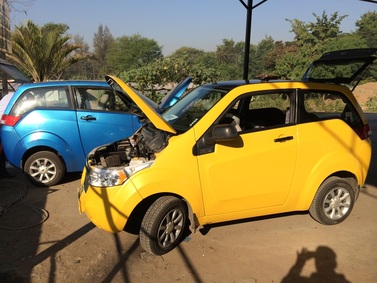 EVA getting updated.
EVA getting updated. The main update was made to the software, which detects the temperature and if the is less than 7-8 degrees, the controller is told to warm the battery pack.
Most batteries don't work well below 10 degrees and sometimes the temperature at night and early mornings in Pune go well below 7 degrees.
This is a problem in Delhi and other cities as well.
So this is an important update to protect the battery pack.
This is really important and gives a lot of peace of mind to the customers.
So far my experience with REVA has been very pleasant. The people are very knowledgeable and it really looks like they take customer satisfaction seriously.
1 unit = Rs 6 (including taxes and other charges)
All Home Charging Done Using: Mahindra charge point plugged into a 15 AMP socket
Total km Driven at Month End: 3730 km
Km Driven in Month: 890 km
Electric Power Used for Charging in Month: 90.0 kW (measured at wall power source)
Public Charging in Month, Power Use: 0 kWh
Charging at Home in Month, Power Use: 90.0 kW
Energy Efficiency, Month: 9.88 km/kWh
Total Charging Energy Used, Lifetime: 374.5 kWh
Energy Efficiency, Lifetime: 9.95 km/kWh
Number of Home Charging Days in Month: 9 nights
Household Power Used for Month: 56.0 kWh (without car charging)
Total Power Used for Month: 146 kWh (includes car charging)
Electric Bill Amount: Rs 895
Cost of charging the CAR - November: Rs 540
Cost for Charging Cars, Lifetime - : 1422.5 + 540 = Rs 1472.5
Maintenance and Repair Costs For 2013 Car to Date: Rs 0
Average km per Driving Day in November : 29 km
Longest Day's Driving in November: 70 km (went to east Pune couple of times)
Number of times, i charged outside my home: 0
Unexpected Low Charge and Unable to Reach Destination: None
So there u have it guys. I spent Rs 540 to ferry myself all month in the comfort of a car and covered
890 km.
1 unit = Rs 6 (including taxes and other charges)
All Home Charging Done Using: Mahindra charge point plugged into a 15 AMP socket
Total km Driven at Month End: 4700 km
Km Driven in Month: 970 km
Electric Power Used for Charging in Month: 98.0 kW (measured at wall power source)
Public Charging in Month, Power Use: 0 kWh
Charging at Home in Month, Power Use: 98.0 kW
Energy Efficiency, Month: 9.89 km/kWh
Total Charging Energy Used, Lifetime: 472.5 kWh
Energy Efficiency, Lifetime: 9.94 km/kWh
Number of Home Charging Days in Month: 10 nights
Household Power Used for Month: 53.0 kWh (without car charging)
Total Power Used for Month: 151 kWh (includes car charging)
Electric Bill Amount: Rs 840
Cost of charging the CAR - December: Rs 588
Cost for Charging Cars, Lifetime - : 1472.5 + 588 = Rs 2060.5
Maintenance and Repair Costs For 2013 Car to Date: Rs 0
Average km per Driving Day in December: 31 km
Longest Day's Driving in December: 80 km (went to East Pune couple of times in the same day)
Number of times, i charged outside my home: 0
Unexpected Low Charge and Unable to Reach Destination: None
So there u have it guys. I spent Rs 588 to ferry myself all month in the comfort of a car and covered
970 km.
The first sticker says it all. Its an electric car that plugs in and uses domestic electricity instead of imported oil - NO MO OIL
The second sticker talks bout the Lithium chemistry that makes this wonder happen!
And that reflected in the Numbers
1 kWh = 1 unit of electricity
1 unit = Rs 6 (including taxes and other charges)
All Home Charging Done Using: Mahindra charge point plugged into a 15 AMP socket
Total km Driven at Month End: 4970 km
Km Driven in Month: 270 km
Electric Power Used for Charging in Month: 26.0 kW (measured at wall power source)
Public Charging in Month, Power Use: 0 kWh
Charging at Home in Month, Power Use: 26.0 kWh
Energy Efficiency, Month: 10.3 km/kWh
Total Charging Energy Used, Lifetime: 498.5 kWh
Energy Efficiency, Lifetime: 9.97 km/kWh
Number of Home Charging Days in Month: 3 nights
Household Power Used for Month: 61.0 kWh (without car charging)
Total Power Used for Month: 87 kWh (includes car charging)
Electric Bill Amount: Rs 522
Cost of charging the CAR - January: Rs 156
Cost for Charging Cars, Lifetime - : 2060.5 + 156 = Rs 2216.5
Maintenance and Repair Costs for the Car to Date: Rs 0
Average km per Driving Day in January: 8.7 km
Longest Day's Driving in January: N.A
Number of times, i charged outside my home: 0
Unexpected Low Charge and Unable to Reach Destination: None
So there u have it guys. This was a slow month and the numbers showed
Just the other day, a Hyundai Verna guy scrapped past me. He was in a hurry. We stopped and he apologized. I saw a deep dent and a white scratch on the black Verna. There was nothing on EVA. Am sure that guy spent close to 20k to repair the scratches. This again illustrates the superiority of plastic over metal for Indian city driving. Great job Reva!
I also had to leave EVA for a few days as i had to go outside Pune.
1 kWh = 1 unit of electricity
1 unit = Rs 6 (including taxes and other charges)
All Home Charging Done Using: Mahindra charge point plugged into a 15 AMP socket
Total km Driven at Month End: 5390 km
Km Driven in Month: 420 km
Electric Power Used for Charging in Month: 44.0 kW (measured at wall power source)
Public Charging in Month, Power Use: 0 kWh
Charging at Home in Month, Power Use: 44.0 kWh
Energy Efficiency, Month: 9.5 km/kWh
Total Charging Energy Used, Lifetime: 542.5 kWh
Energy Efficiency, Lifetime: 9.97 km/kWh
Number of Home Charging Days in Month: 5 nights
Household Power Used for Month: 57.0 kWh (without car charging)
Total Power Used for Month: 101 kWh (includes car charging)
Electric Bill Amount: Rs 610
Cost of charging the CAR - Februrary: Rs 264
Cost for Charging Cars, Lifetime - : 2216.5 + 264 = Rs 2480.5
Maintenance and Repair Costs for the Car to Date: Rs 0
Average km per Driving Day in February: 14 km
Longest Day's Driving in February: N.A
Number of times, i charged outside my home: 0
Unexpected Low Charge and Unable to Reach Destination: None
So there u have it guys. This was again slow month and the numbers showed. But still for all my purposes, the 'fuel' cost for me has been Rs 2480.5 for over 7 months of using the e2o
1 unit = Rs 6 (including taxes and other charges)
All Home Charging Done Using: Mahindra charge point plugged into a 15 AMP socket
Total km Driven at Month End: 5870 km
Km Driven in Month: 480 km
Electric Power Used for Charging in Month: 48.0 kW (measured at wall power source)
Public Charging in Month, Power Use: 0 kWh
Charging at Home in Month, Power Use: 48.0 kWh
Energy Efficiency, Month: 10 km/kWh
Total Charging Energy Used, Lifetime: 590.5 kWh
Energy Efficiency, Lifetime: 9.94 km/kWh
Number of Home Charging Days in Month: 5 nights
Household Power Used for Month: 84.0 kWh (without car charging)
Total Power Used for Month: 132 kWh (includes car charging)
Electric Bill Amount: Rs 790
Cost of charging the CAR - March: Rs 288
Cost for Charging Cars, Lifetime - : 2480.5 + 288= Rs 2768.5
Maintenance and Repair Costs for the Car to Date: Rs 0
Average km per Driving Day in March: 16 km
Longest Day's Driving in March: N.A
Number of times, i charged outside my home: 0
Unexpected Low Charge and Unable to Reach Destination: None
So there u have it guys. For all my purposes, the 'fuel' cost for me has been Rs 2768.5 for over 8 months of using the e2o
1 unit = Rs 6 (including taxes and other charges)
All Home Charging Done Using: Mahindra charge point plugged into a 15 AMP socket
Total km Driven at Month End: 6360 km
Km Driven in Month: 490 km
Electric Power Used for Charging in Month: 50.0 kW (measured at wall power source)
Public Charging in Month, Power Use: 0 kWh
Charging at Home in Month, Power Use: 50.0 kWh
Energy Efficiency, Month: 9.8 km/kWh
Total Charging Energy Used, Lifetime: 640.5 kWh
Energy Efficiency, Lifetime: 9.93 km/kWh
Number of Home Charging Days in Month: 5 nights
Household Power Used for Month: 97.0 kWh (without car charging)
Total Power Used for Month: 147 kWh (includes car charging)
Electric Bill Amount: Rs 880
Cost of charging the CAR - April: Rs 300
Cost for Charging Cars, Lifetime - : 2768.5 + 288= Rs 3068.5
Maintenance and Repair Costs for the Car to Date: Rs 0
Average km per Driving Day in April: 16 km
Longest Day's Driving in April: N.A
Number of times, i charged outside my home: 0
Unexpected Low Charge and Unable to Reach Destination: None
So there u have it guys. For all my purposes, the 'fuel' cost for me has been Rs 3068.5 for over 9 months of using the e2o
1 unit = Rs 6 (including taxes and other charges)
All Home Charging Done Using: Mahindra charge point plugged into a 15 AMP socket
Total km Driven at Month End: 6980 km
Km Driven in Month: 620 km
Electric Power Used for Charging in Month: 61.0 kW (measured at wall power source)
Public Charging in Month, Power Use: 0 kWh
Charging at Home in Month, Power Use: 61.0 kWh
Energy Efficiency, Month: 10.1 km/kWh
Total Charging Energy Used, Lifetime: 710.5 kWh
Energy Efficiency, Lifetime: 9.83 km/kWh
Number of Home Charging Days in Month: 6 nights
Household Power Used for Month: 64.0 kWh (without car charging)
Total Power Used for Month: 125 kWh (includes car charging)
Electric Bill Amount: Rs 750
Cost of charging the CAR - May: Rs 366
Cost for Charging Cars, Lifetime - : 3068.5 + 366 = Rs 3434.5
Maintenance and Repair Costs for the Car to Date: Rs 0
Average km per Driving Day in May: 20 km
Longest Day's Driving in May: N.A
Number of times, i charged outside my home: 0
Unexpected Low Charge and Unable to Reach Destination: None
So there u have it guys. For all my purposes, the 'fuel' cost for me has been Rs 3434.5 for over 10 months of using the e2o
Those interested can read my blog on Europe and EVs
However there was a glitch waking up EVA when i got back from vacation. EVA just would not start charging. So i had to call the Mahindra REVA guys. Turned out that the Intelligent Energy Management System (IEMS) which is the master system was not able to wake up. The Mahindra Reva engineer visited my home and replaced the entire IEMS and then EVA started charging and its been normal ever since. I did not have to pay anything.
Here is a photo of EVA drenched in rain in the Balewadi Stadium, where i run every morning :)
1 kWh = 1 unit of electricity
1 unit = Rs 6 (including taxes and other charges)
All Home Charging Done Using: Mahindra charge point plugged into a 15 AMP socket
Total km Driven at Month End: 7810 km
Km Driven in Months: 830 km
Electric Power Used for Charging in Months: 83.0 kW (measured at wall power source)
Public Charging in Months, Power Use: 0 kWh
Charging at Home in Months, Power Use: 83.0 kWh
Energy Efficiency, Months: 10 km/kWh
Total Charging Energy Used, Lifetime: 793.5 kWh
Energy Efficiency, Lifetime: 9.84 km/kWh
Number of Home Charging Days in 2 Months: 9 nights
Household Power Used for Months: 73.0 kWh (without car charging)
Total Power Used for Month: 156 kWh (includes car charging)
Electric Bill Amount: Rs 940
Cost of charging the CAR - June & July: Rs 438
Cost for Charging Cars, Lifetime - : 3434.5 + 438 = Rs 3872.5
Maintenance and Repair Costs for the Car to Date: Rs 0
Average km per Driving Day in June & July: 13 km
Longest Day's Driving in June & July: N.A
Number of times, i charged outside my home: 0
Unexpected Low Charge and Unable to Reach Destination: None
So there u have it guys. For all my purposes, the 'fuel' cost for me has been Rs 3872.5 for 11 months 25 days of using the e2o :)
We have been incredible surprised by the reliability of the e2o. We had to spend nothing on repairs or maintenance.
We here are seeing the extreme efficiency of the electric motor and the reliability of it.
Just the fact that this car has saved over 800 litre's of oil, which is usually imported means a lot to me personally.
If we all have to do our bit for the country, this is one small way.
Also the real important point is how this car uses so much energy and is so efficient. This is a point that is very difficult to get across. For example - I drive to Pavana Dam - a round trip distance of 105 km and this car just consumed around 78 km worth of energy. I had around 24 km of energy left, which truly boggles the mind.
This car uses the so less energy per km than even the most super efficient petrol engine and even more efficient than some petrol bikes. All this because of the efficiency of the electric motor.
The impact of the energy used is astronomically lower and thus this car is greener than anything we have on the road.
Yes, even if your electricity is powered by Coal.
Its time for the petrol heads, the EV cynics and people who are resistant to change to see a live example in energy efficiency right here!
This electric car offers the potential to use energy from renewable sources. You can install a solar panel and run on clean electrons.
And if you stick to the grid, consider this as the grid gets cleaner, your electric vehicle gets cleaner in time.
Can that be said about ICE based vehicles? They will always remain dirty and bad!!!
In August i took EVA outside the city a lot to the mountains in Pune. Here are some pics.
1 kWh = 1 unit of electricity
1 unit = Rs 6 (including taxes and other charges)
All Home Charging Done Using: Mahindra charge point plugged into a 15 AMP socket
Total km Driven at Month End: 8620 km
Km Driven in Months: 810 km
Electric Power Used for Charging in Months: 81.0 kW (measured at wall power source)
Public Charging in Months, Power Use: 0 kWh
Charging at Home in Months, Power Use: 81.0 kWh
Energy Efficiency, Months: 10.6 km/kWh
Total Charging Energy Used, Lifetime: 874.5 kWh
Energy Efficiency, Lifetime: 9.85 km/kWh
Number of Home Charging Days in August: 6 nights
Household Power Used for Months: 65.0 kWh (without car charging)
Total Power Used for Month: 146 kWh (includes car charging)
Electric Bill Amount: Rs 840
Cost of charging the CAR - August: Rs 486
Cost for Charging Cars, Lifetime - : 3872.5 + 486 = Rs 4358.5
Maintenance and Repair Costs for the Car to Date: Rs 0
Average km per Driving Day in August: 27 km
Longest Day's Driving in August: 90 km to Lavasa and 76 km to Pavana Lake
Number of times, i charged outside my home: 1 (We went to Lavasa and had to charge in a restaurant's Kitchen!)
Unexpected Low Charge and Unable to Reach Destination: None
So guys, it has been 1 year 4 months driving the e2o and EVA is very steady and reliable. I have crossed 11,000 kms and my total 'electricity' charges are around Rs 5000. I have spent Rs 0 on servicing and maintainance and EVA is a joy to drive with that great low rev torque and instant pickup making city driving such a pleasure.
Its been almost 1 year 10 months driving the e2o and i'm nearing 14,000 km and my total electricity charges are around
Rs 7000. The cost per km is still at Rs 0.50 paise per km.
The best part, its nearly 2 years and i have spent Rs 0 on maintenance.
The e2o has been very reliable over the past 2 years.
Its been almost 2 years driving the e2o and i have completed 15,000 km and my total electricity charges are around
Rs 7500.
The best part, its nearly 2 years and i have spent Rs 0 on maintenance. Its been extremely reliable.
I'm giving the car to the service station on August 1st week. Will keep you posted.
I have been working on a fun project of setting up community charging stations all around Pune and even have got more people in Delhi setting up these stations. Do read my blog here. Would love to know your opinions on this! Do comment!
Have been taking EVA outiside Pune a lot. Lonavala, Lavasa are beautiful during the monsoon rains. Here are some pics.
The community (Delhi, Pune, Bangalore) is opening up like anything and want to offer stations to the community.
I think this is a biggie. This will help me take my EVA beyond Pune and the same is applicable for others.
There are community stations coming up every week!
What do u think? Do comment below!
EVa has gone out of the city a lot! Mumbai, Lonavala, Lavasa, Mahabaleshwar. There are plans to electrify a route till the Arabian Sea!
Doing Pune-Mumbai has been a regular thing due to our network of community charging stations. Also the community has developed smart phone apps to find charge points so its become very easy.
I also participated in an EV exploratory drive to Ahmednagar and Shirdi. We installed 5 community charge points on the route.
Now an electric car owner can drive from Mumbai all the way to Shirdi via Pune!
Service Issues and Disappointment with Mahindra
I have been interacting with the EV / e2o community from many cities - Mumbai, Pune, Bengaluru, Delhi and Kolkatta.
People are generally happy with the car but there are few people who have had issues with parts not reaching them in time from Mahindra Electric head office in Bengaluru.
I have also observed people facing major issues like - Car stopping all of a sudden even though SOC is > 20%. This has resulted in some users having to tow the car to the service center. One of the main reasons behind such issues is that people dont charge the car regularly. This makes certain cells in the battery pack at an unbalanced state and this results in the battery management system or the BMS behaving in a buggy manner. For more tips on regular charging and taking care of the lithium-ion battery, please do read my blog.
I haven't faced such issues now (touchwood) with EVA and there are many users who have completed 30k, 50k and 60k km on the e2o and are extremely happy with the car.
Do check out our Youtube channel for more ownership videos.
Here are some of my disappointments with Mahindra, that i personally have
- Its more than 3 years since they launched the e2o and there have been no upgrade packages offered to existing customers apart from Power Steering upgrade.
- Many customers are looking for safety upgrades like - ABS, Air Bags. We have no such upgrades.
- Quick Charge Stations was promised when we bought the car and there has been none installed.
- The Quick charge port which is used by DC quick charge stations also has not been provided as an upgrade package.
- Mr Chetain Maini (ex CEO of Reva) was beginning to do great things with the Halo sports EV, Quickcharge stations, way back in 2014. But sadly Mahindra have booted him out and have shelved all his ideas.
Selling an electric car in India is a tough proposition and Mahindra Electric is not doing so well, but they have just released the UK version and should do well in UK and Europe.
That will ensure the factory will keep churning out Mahindra EV's and we (existing customers) will be taken care off, as i can clearly see they are in it for the long run.
While other car makers like Maruti and Tata are happy selling thousands of cars that cause more harm than good, here is an Indian company that is looking at the future.
Now that, i admire. We hope we see more from them in the coming years.
Thank you for listening to me rambling, but i will keep you posted on more news from the company and the community as the blazing Indian summer transforms into beautiful Pune monsoon!
Stay tuned for more updates!

